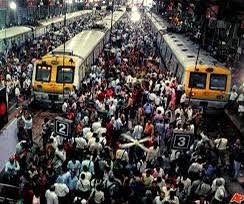Over-population leading to Over-exploitation
If little children are reading this page, the first question that comes to mind is: what is population, and what is the definition of the population? So, here's your response.
A population is a group of individuals from the same species that live together and interbreed in the same region. Individuals in a population usually rely on the same resources, face comparable environmental limitations, and rely on the availability of other members to survive in the long run.
Population demographics, often known as demography, is a branch of science concerned with collecting and evaluating these figures. Any statistical element that influences population growth or decline can be included in demographics, although certain characteristics are particularly important: population size, density, age structure, fecundity (birth rates), mortality (death rates), and the sex ratio. Size, density, fertility, mortality, sex ratio, and age structure are all characteristics that may be measured and calculated to assess the state of a population. These demographic data offer researchers standardized measures for comparing populations and determining the likelihood of extinction. According to the data I obtained, the global population was rising at a pace of approximately 1.05 percent each year (2020). (down from 1.08 percent in 2019, 1.10 percent in 2018, and 1.12 percent in 2017). The current annual population growth rate is predicted to be 81 million people. The annual growth rate peaked in the late 1960s when it hovered around 2%.
I was looking for further information when I came upon a website that displayed the world population, and the results astounded me. By the way, I'm not sure whether this is true, but I thought I'd share it with you anyhow. The image below depicts the outcome of our world's population.
India's population distribution is unbalanced. The following contains information about India's population distribution. Factors impacting population distribution: The physiography and climate of an area have a significant impact on population distribution. Human settlements, for example, emerge in areas with abundant water, fertile land, and flat physiography. In India, dense population distribution may be found in areas with well-developed agricultural, industry, trade, and other services. The Northern Plains and cities such as Mumbai, Pune, Delhi, Chennai, Kolkata, Bengaluru, and others, for example, are heavily inhabited.
India's average literacy rate is 77.7 percent. The proportion of youngsters in India is higher. Although the rate of population growth is slowing, the overall population continues to rise. According to one book I read, India's literacy rate was 72.2 percent in 2016. From 1700 onwards, as the Industrial Revolution gained traction, population growth accelerated considerably. Due to medical advancements and significant gains in agricultural production, notably beginning in the 1960s, the pace of population growth has increased even more rapidly in the previous 50 years. According to the United Nations Population Division, the global population will reach 9.8 billion in 2050 and 11.2 billion in 2100.
The following is a list of eight nations ranked from most populous to least populous throughout the world.
1. China (1,373,541,278 people).
2. India (1,266,883,598 people).
3. The United States, has a population of 323,995,528 people.
4. Indonesia, has a population of 258,316,051.
5. Brazil, with a population of 205,823,665.
6. Pakistan has a population of 201,995,540 people.
7. Nigeria has a population of 186,053,386 people.
8. Bangladesh, with a population of 156,186,882, is the eighth-most populous country in the world.
Guys, check out this link: Population - Wikipediahttps://en.wikipedia.org › wiki › Population
The world's population is anticipated to reach a peak in the future, after which it will begin to fall owing to economic factors, health concerns, land depletion, and environmental threats. According to one study, the world's population will most certainly cease rising before the end of the twenty-first century. Furthermore, there is a chance that the population will fall before 2100. Eastern Europe, the Baltics, and the Commonwealth of Independent States have all had population declines in the previous decade or so.
Population planning: The process of modifying a human population's pace of growth is known as human population planning. Human population control has been practiced in the past with the objective of slowing population increase. Concerns about global population increase and its implications on poverty, environmental degradation, and political stability prompted initiatives to slow population growth rates from the 1950s through the 1980s. While population control can include measures that enhance people's lives by allowing them more control over their reproduction, some programs, such as the Chinese government's one-child per family policy, have used coercion.
Check out my other blogs as well. If you enjoyed this article, please share your thoughts in the comments area. Also, share this blog with your friends and family to raise population control awareness. Let's talk about it in the upcoming blog. Take care till then, and don't forget to read my other articles and follow me on Instagram.
My other blogs:
1. Disaster management part 2: https://bustlingmindd.blogspot.com/2021/08/disaster-and-disaster-management-part-2.html
2. Disaster management https://bustlingmindd.blogspot.com/2021/08/disaster-and-disaster-management-part-1.html








